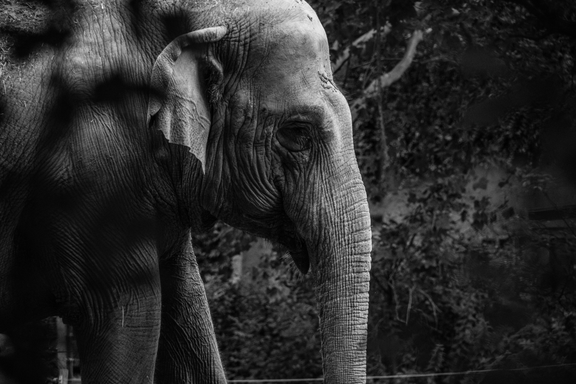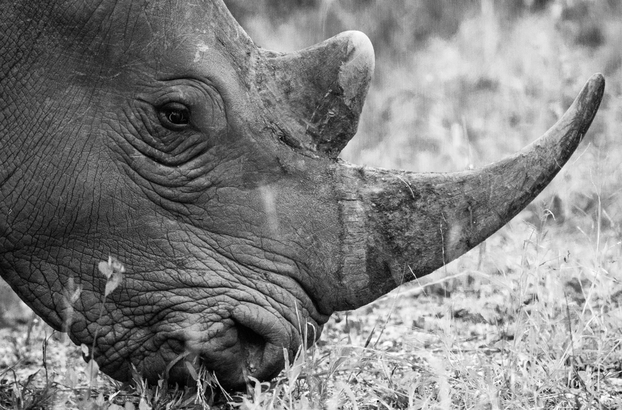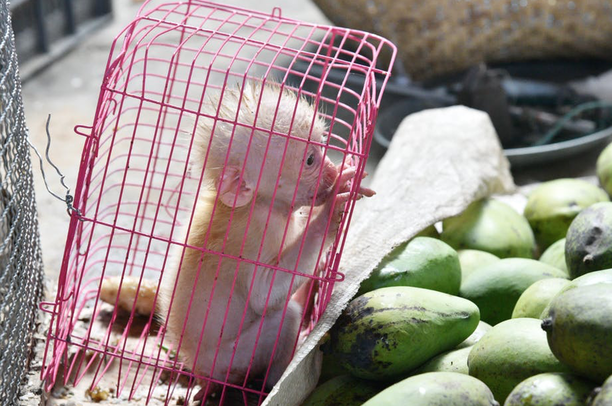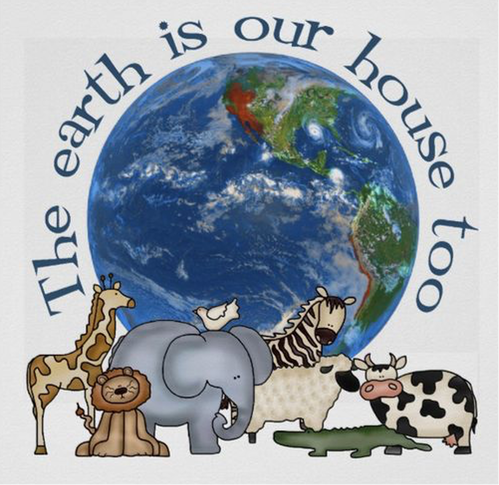|
Black market trade of wild animals and plants, living or dead, for their parts or products derived from them, is a multibillion-dollar business, third only to drugs and arms. The illegal wildlife trade generates a hefty sum of $5 to $20 billion per year. The black market trade of wildlife is both unethical and unsustainable. Endangered species are the common contraband for their rarity and economic values of exotic products. But, not all wildlife trade is illegal! Many wildlife species are exclusively bred and harvested for their legitimate trade as food sources, pets, ornamental values, touristic and medicinal purposes. Things get messy when wildlife trade escalates unsustainably, negatively impacting the natural resources, biodiversity, and local businesses in the region that might benefit from the tourism and legal trade. Nonetheless, the line between legal and illegal trade has been blurred with poachers trying to pass off their illicit wildlife products as legal. Captive breeding of wildlife species for such products spikes the demand and increases poaching in the wild. But the question arises, “Why would someone covet the word’s most charismatic wildlife species?” The answer is simple! Some animals like African Gray Parrots, cuddly Asian Otters, and squirrels are desired as pets, pangolin meat and shark fins as a delicacy; and the body parts of tigers, bears, and pangolins are used in traditional Asian medicines; while elephant ivory, and tiger skins and bones are often traded as souvenirs or as a status symbol. 3 of the most trafficked species Elephants: The demand for elephant ivory is skyrocketing in Asia and around the world for its use as a decorative item. For this reason, the population had plummeted by 80% in Africa since 1970. In 1989, CITES banned the illegal trade of elephant ivory from saving the species from extinction. To shine a light on their “Critically Endangered” conservation status, here’s an interesting fact; 100,000 out of 500,000 African elephants were killed between 2010 and 2012. It is recorded that 96 elephants are killed every day for ivory. Top ivory-consuming countries, i.e., the United States, China, and the United Kingdom, have enacted bans to enforce the CITES ban on international trade. In addition, the top three markets of U.S. states, i.e., New York, California, and Hawaii, have imposed stringent ivory bans to prevent intrastate trade. In California, for example, the Department of Fish and Wildlife fines up to $50,000 in wildlife crimes and up to a year of imprisonment. Rhinoceros: Rhino horns are among the most expensive wildlife commodities on the planet. Ill-famed for their medicinal miracles, a rhino horn is worth more than a pound of cocaine in the black market. Even though the belief is not backed by scientific evidence, there’s a billion-dollar market for the rhino horn, which has pushed the species over the edge. According to an estimate, three rhinos are poached every day. According to the IUCN, four species of rhinos are critically endangered. For this reason, they’re included in the CITES Appendix I, which means their horn trade is banned, except for southern white rhino (listed in Appendix II). Pangolins: The scaly Pangolins of Asia and Africa is the most illegally trafficked mammal in the world. Over one million Pangolins have been internationally traded in the past decade. They’re desired for their meat, a delicacy in Asian countries like China, Vietnam, and their scales used in traditional medicines. CITES banned the international trade in pangolins in 2016—all eight species are classified as “Critically Endangered” with extinction by the IUCN. Wildlife Trade Hotspots Black market business of wildlife trade is critically threatening in “wildlife trade hotspots” as China, Southeast Asia, East and South Africa, eastern borders of EU, and some black markets of Mexico, Caribbean, Indonesia, New Guinea, and the Solomon Islands. The situation is even worse in China--the world’s largest wildlife product market. Did you know that elephants are killed during the extraction of ivory for trade? 70% of people in China didn’t know either! In an interview with The Wilson Centre, a wildlife expert and author of the book "Blood of the Tiger; A Story of Conspiracy, Greed, and the Battle to Save a Magnificent Species," Judith Mills confided that Tigers are farmed as cows and pigs in China. Their bones are used for making wine and skin for rugs. The fate of bears are no different. They’re milked for their bile, which is used in Chinese medicine, by inserting a catheter into their stomachs. And the officials consider this an inhumane farming practice as a “conservation measure.” Latin America, especially Ecuador is rich in wildlife biodiversity--it has as much as twice the bird species as the entire United States and thus makes a good trade hotspot. But, unfortunately, illegal trade is taking a serious toll on Parrot species; 46 out of 145 parrot species are at the risk of extinction. Most of the animals end up being smuggled to United States, Europe, and Japan. But many are kept as pets by locals as an old tradition. According to an estimate, 30% of Brazil and 25% of Costa Rica natives kept wild animals as pets. Population growth has also escalated the popularity and demand for wildlife. People in many countries are inclined to traditional medicinal practices, which fuels the black market trade, and so does poverty. Among other factors which fuel the demands for illegal wildlife trades are;
Why do we need to end the exotic wildlife trade? Since 1970, the world has lost 60% of its wildlife population, and we are already halfway through the sixth mass extinction (Holocene Extinction). Illegal wildlife trade is the second leading cause of the looming biodiversity crisis after habitat loss. The illegal logging of protected forests for harvesting timber to trapping birds, poaching of elephants and pangolins, and over-exploitation of endangered marine species is causing an unprecedented decline in the population. It has disrupted the balance of the ecosystem. The disappearance of apex predators like tigers and large animals as elephants has altered the ecosystems they inhabit. According to one study, over 950 species in the International Union for Conservation of Nature (IUCN) red list are threatened by their illegal international trade. Social media is fueling the wildlife trade, displaying the ease and pleasure of keeping exotic species as pets. This has also made it easier to locate potential buyers/sellers. But, animals suffer when smuggled, and later, in captive environments. They’re transported in thermoses, toilet paper tubes, cardboard boxes, bullet holes, nylon stockings, hair curlers, and whatever small space they’d fit in. Confined small spaces are no replica of the wild habitat. The tree-dwelling nocturnal marsupial, Sugar gliders, for example, enjoy large family groups where they can interact, socialize, and glide from tree to tree while enjoying with each other. Intense lightning and loud noises are disrupting the sleep-wake patterns of the animal and humans! Most of the time, poachers use brutal tactics to trap exotic wildlife, especially birds. African Gray Parrots, one of the most heavily trafficked birds, is often trapped and trafficked after clipping their feathers off. Such measures have significantly declined its population by 90% in some regions. Cubs of otters are taken after their dens are heavily smoked, and overly protective parents are electrocuted or shot dead. Unsustainable poaching and hunting of wildlife resources affect the ecological balance of the planet negatively. In some places, it is the leading cause of the biodiversity crisis. Many wildlife species introduced by wildlife traders as pets are invasive, for example, Burmese pythons. And let us not ignore the incidental killing of the variety of wildlife besides those intended. Thousands of rangers have also lost their lives in trafficking-related killings since 2003. The black market trade of the wildlife gravely overlooks the human health concerns associated with the trafficking of animals. Some animals carry zoonotic diseases when they’re exported from one place to another. Turtles, snakes, lizards, and reptiles all carry infectious and disease-causing agents. The current pandemic of corona virus is also believed to have been circulating among pangolins and acted as a vector for humans’ transmission. And then there are some incidents like what happened with the captive species of Terry Thompson in Zanesville, Ohio, back in October 2011. How to prevent the black market trade of wildlife species? International laws are helping to prevent the illegal poaching and smuggling of wildlife. One of the most significant regulations to combat the black market trade of wildlife is the Convention on International Trade in Endangered Species of Wild Fauna and Flora (CITES), with 179 nations as the signatory. With its multi-level protection, the purpose of the regulation is to reduce the life-threatening trade of 5,800 animal species and 30,000 plant species via permitting system. In collaboration with World Bank, INTERPOL, and United Nations Office on Drugs and Crime (UNODC), CITES has also founded International Consortium on Combating Wildlife Crime (ICCWC) to increase the prosecution and punishment of wildlife traders and criminals. There’s no lack of laws against the illegal wildlife trade. However, the implementation and enforcement of these laws is the responsibility of individual countries to impose additional bans if necessary. The United States, for example, has the Wild Bird Conservation Act of 1992 that bans the import of all wild-caught birds. The European Union followed suit in 2007. Numerous environmental activist and international leaders have raised their voices against the illegal wildlife trade. The 2013 former President Obama’s Wildlife Task Force and the meeting of Prince William with President Xi Jinping in 2015 about the ban on elephant ivory consumption are few examples. Then, there are high tech solutions such as using Spatial Monitoring And Reporting Tool (SMART); a conservation device to trace the trade hotspots and low-cost alternatives like using trained dogs to sniff out wildlife products. But, implementing regulations is not enough. We need to educate people about the significance of wildlife biodiversity and the roles of individual species in maintaining the ecological balance of the ecosystem. Also, make the valuable resources known to them so that they can report if they see anything suspicious. This year, pledge to educate and raise awareness among masses to conserve the endangered species and stand up against wildlife crimes, for this planet is NOT ONLY OURS! AuthorNida Riaz is a freelance blogger based in Pakistan. She started writing about her passion for the environment when the world came to a stop in early 2020.
1 Comment
|
|
|
(833) CMS-LINE
(833) 267-5463 PO Box 13477 Mill Creek, Wa, 98082 © Conservation Made Simple. All rights reserved.
501(c)(3) Non-Profit, Tax ID#: 82-1646340 Copyright © 2021 Conservation Made Simple |




